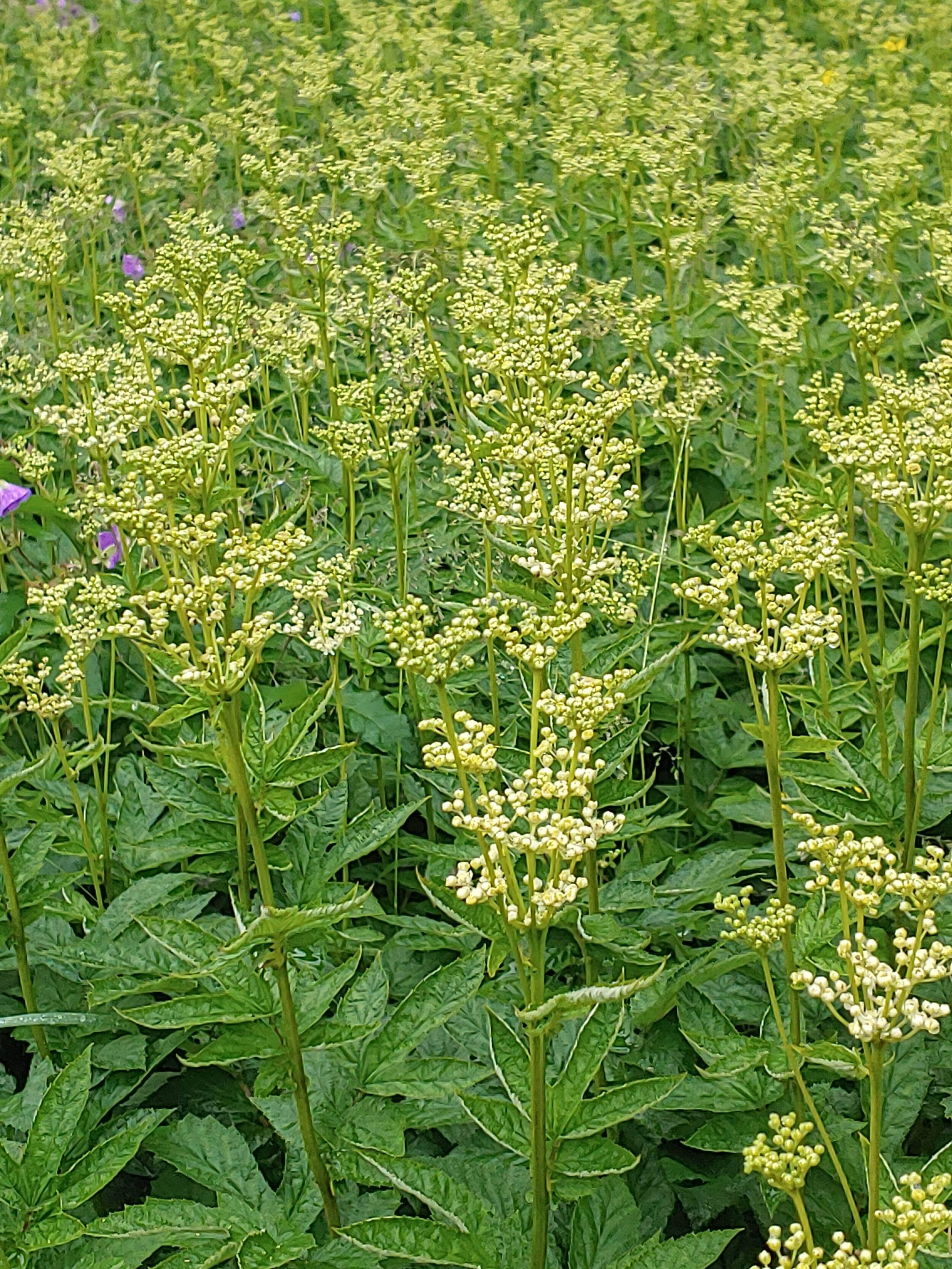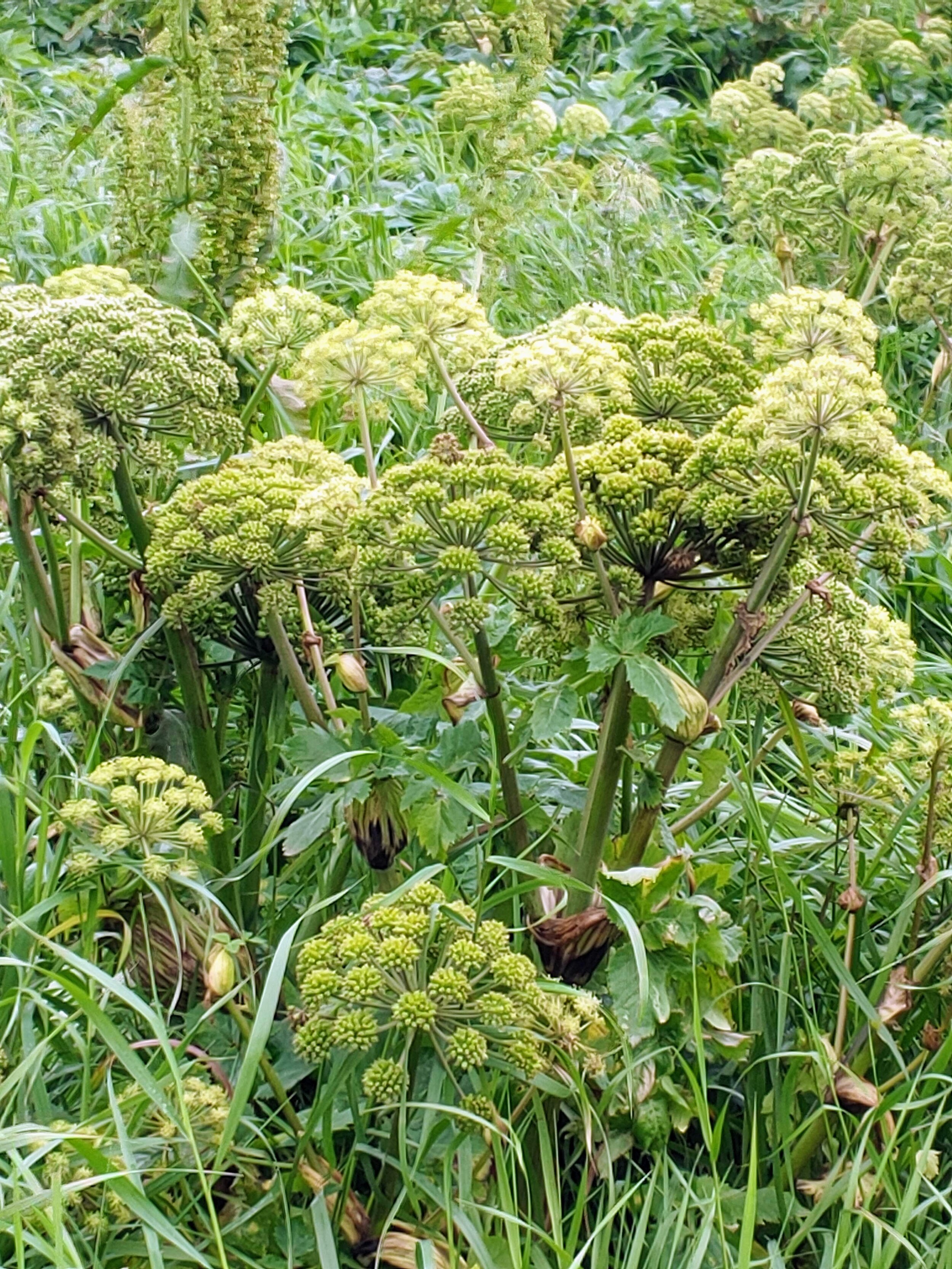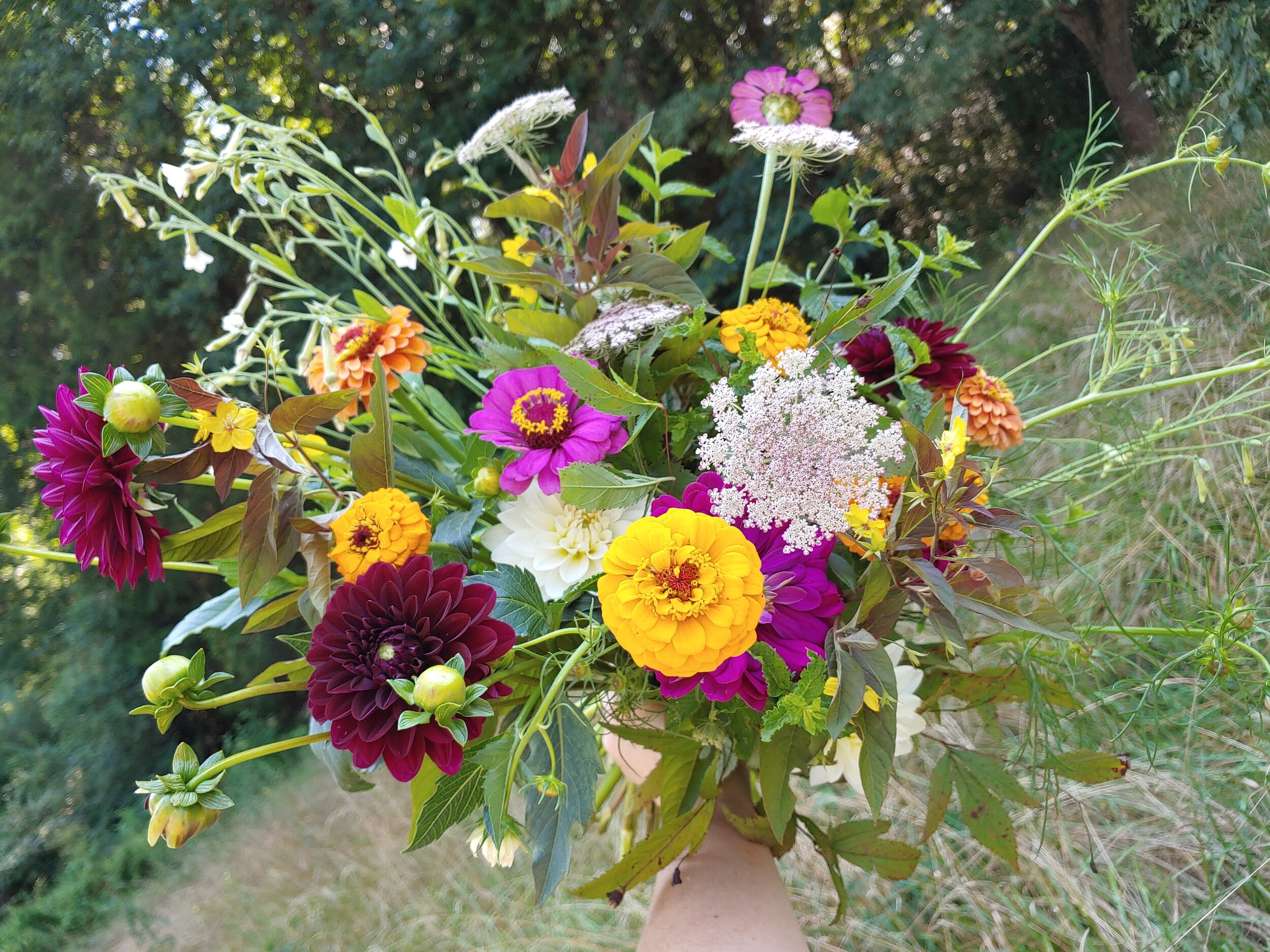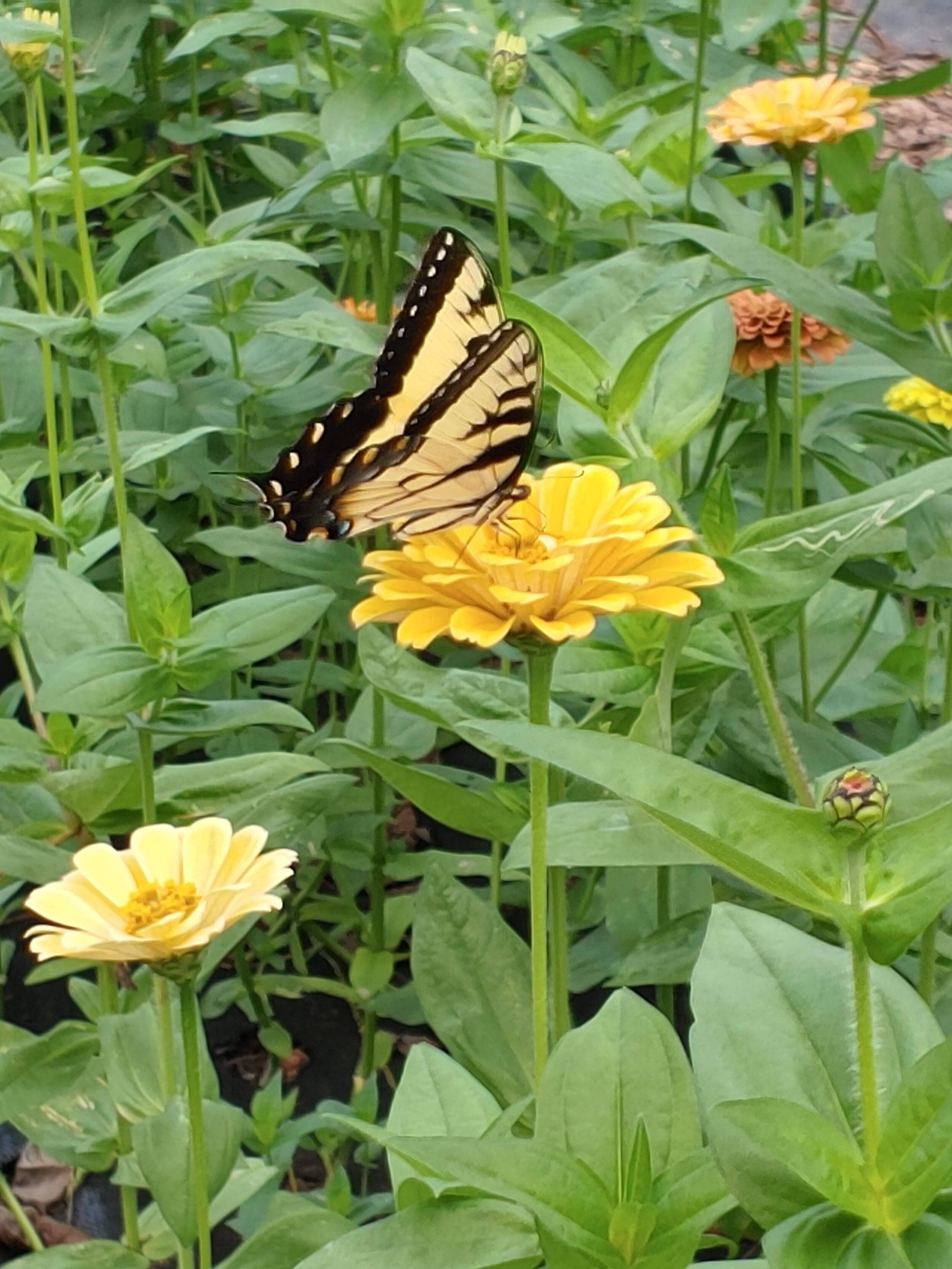
My Top Dinnerplate Varieties for Hot Climates
Recently I’ve had multiple requests for variety names of dahlias that like hot humid climates. Honestly, no dahlia really likes that but there are some that do better than others. Dinnerplates were mentioned specifically so I’ve decided to cover those today.
One thing to recognize about dinnerplates grown in a less than ideal climate is that they are more often saladplates. To get a true dinnerplate size, you’d have to do some pretty specific growing- strict fertilizer regime, no pinching, etc. (similar to how show growers do it). Also, I’m interpreting “dinnerplate” loosely. Some of the dahlias I mention here are large varieties but don’t quite have the genetics to reach dinnerplate size but I’m including them because they give a lot of “wow” factor in your garden. Lastly, it’s pretty average for some varieties to only throw 3-5 blooms per season. It takes a lot out of the plant to produce a bloom that size.
Here we go: (in alphabetical order)
AC Ben
Cactus type orange dahlia. This variety is about as prolific as a large dahlia can be in a hot climate (that means I get a minimum of 5 blooms per plant each year). That’s really good for a dinnerplate type. Pictures really don’t do it justice, you need to see it to know how amazing this variety can be!
Cafe Au Lait
The queen herself— she actually does really well in the heat. She can vary in color and I still can’t figure out if it’s temperature related or soil pH. You can even get two different color blooms on the same plant. Her color ranges from cream to blush pink, can even have lilac streaks occasionally.
Hollyhill Black Beauty
Hands down, my favorite burgundy dahlia. Others are more productive but this one is stunning when it’s all the way open. The petals fall so elegantly into rows of ruffles!
Kenora Lisa
Her color will blow your mind. It’s not just bright pink— there’s a whole sunset in there! Also- she has the glitter! Dahlia glitter that is.. some flowers have a natural sparkle to them called Dahlia Glitter. Fairly productive too.
Mary Lou
If you took a sunflower and turned it into an elegant dahlia, you’d have Mary Lou. She’s just the perfect shade of yellow, not too bright, not too garish, just right. Makes good tubers too- they store well. Excellent addition to the garden.
Rip City
Rip City - the two burgundy blooms on the left here. Probably one of the best production burgundies out there. Amazing tuber maker too— you’ll never run out of Rip City tubers.
Roque Starburst
One of my two all time favorite whites. I only grow a few of these for me mostly b/c they are too big for most of my customers. But I love this one- often she has a blush center!
Sierra Glow
The large one in the center here. She changes color as she matures in the vase. Begins as a rusty tone but then turns a smoky mauve. Loads of ruffles! Very tall too- you gotta stake this one!
Winkie Colonel
A Big Bold Red! I stopped growing this one several years ago b/c it wasn’t popular with my florist customers but if you just want something to show off— This is it! Beautiful crimson red, nice and full!
Honorable Mention: This one doesn’t get to be on the list because it’s not the most reliable but it’s so pretty!
Hee Haugh
Unfortunately I have the hardest time getting the tubers to survive on this variety. It’s very on and off, some years I have it in my field, some I don’t. It didn’t make it this year. Maybe you’ll have better luck- it’s so pretty!
The Midsummer Malaise
Have you looked at your dahlia plants this summer and thought: What is going on with my dahlia? It looks awful!
You may be suffering from what I call “The Midsummer Malaise” (TMM). TMM isn’t an official disease or anything like that. But it’s a common issue I see on Dahlias at least once a summer, especially if you live in a hot climate.
Usually it looks a little something like this. Brown crunchy or soggy (if it’s been wet) leaves or perhaps yellow leaves if you catch it early. These are signs of stress. Ideally dahlias love more moderate cooler temps- 60-70’s. Well most places don’t get those until Fall. But in order to have dahlias in the fall, you have to grow them through the summer. So you have to get them through the heat.
So what do you do about it?
1. Clean up the plant. Remove any brown, yellow, crunchy dead leaves— anything that’s not green and luscious.
They should look like the picture below. Some growers actually pre-emptively remove all the foliage on the lower 18” of the plant. But I find that’s a lot of extra labor for 2200 plants. So I remove it where needed.
2. Inspect the plants for any sign of disease- especially powdery mildew. PM looks like a white dusting on your leaves- when it starts, it can occur just in small spots on the leaves. We’ll talk more about how to deal with PM another time. For now just notice if the plants don’t look “normal.” And by normal I mean, they should be solid green - dahlias don’t have any variegation in the leaves. It’s very slight in the photos below but those lighter greenish yellow patches are a tell-tale sign.
If you see sings of yellow mottling, then you are going to want to investigate further. That could be a sign of disease or nutrient deficiency. I tend to treat for nutrient deficiency before assuming disease unless I see any other tell-tale signs of disease.
3. It’s time for a little TLC. Dahlias are pretty hungry and need to be fed regularly to perform well. So it’s time to fertilize.
The type of fertilizer is going to depend on the stage of growth. If your plant is less than about 6 weeks old then a fertilizer that includes a bit of nitrogen is good. Dahlias don’t need loads of nitrogen. Nitrogen promotes green growth. Generally you are looking for a fertilizer that is higher in phosphorus and potassium. This is a good time to know what nutrients your soil contains (hence the reason you always hear gardeners talk about taking a soil test).
***But I know most of us didn’t stop and soil test this spring. (Don’t feel bad, I didn’t test for several years when I started gardening). You can test this fall and you’ll be ready for next year!***
So if you don’t know what nutrients your soil is low in, you do fly a little blind. But since we know that dahlias like phosphorus and potassium, we’ll look for that. Fertilizers that are made for tomatoes or roses are also good for Dahlias. I encourage you to seek out an organic fertilizer. Also I prefer liquid feeds at this point. I use a powdered/granular fertilizer when planting but prefer liquid during the growing process. I just find it easier to apply. (Brands differ from place to place and that’s why I feel it’s more important to tell you what to look for in the fertilizer than an actual name brand.)
Feed your dahlias (according to the instructions on your fertilizer) about every other week from now until about a month before your first frost date.
4. Lastly, make sure your dahlias are getting plenty of water. You can’t do anything about high heat but you can control the moisture. I try not to let my soil completely dry out. You do want to make sure you have good drainage though. Dahlia tubers don’t like sitting in mucky wet soil.
The Midsummer Malaise is bound to get you at some point and some years it is more extreme than others. But it doesn’t have to spell a death sentence for your plants. It just means it’s time for a little garden therapy for you and TLC for your plants!
Icelandic Flora
A few days into our trip, we visited the Grasagarður Reykjavíkur (Reykjavik Botanical Garden). It was definitely a highlight of the trip for me. Weather in Iceland in July is like perpetual spring. It feels like our March weather. I loved it! I highly recommend visiting Northern countries in the middle of the summer- great way to beat the heat!
My favorite part of the botanical garden was called the Systemic Garden. The understanding I eventually came too (b/c remember a lot of stuff is written in Icelandic) was that this was a test garden of sorts. It contained multiple varieties of each species planted in the garden. The plants were in raised stone beds with stone dividers.
I had the chance to see so many plants that I dream of growing but I know won’t make it in our hot climate. But the best of all was the Blue Poppy!
I’ve loaded up a gallery below of some of my favorites. If you hover over the photo, you can see the name.
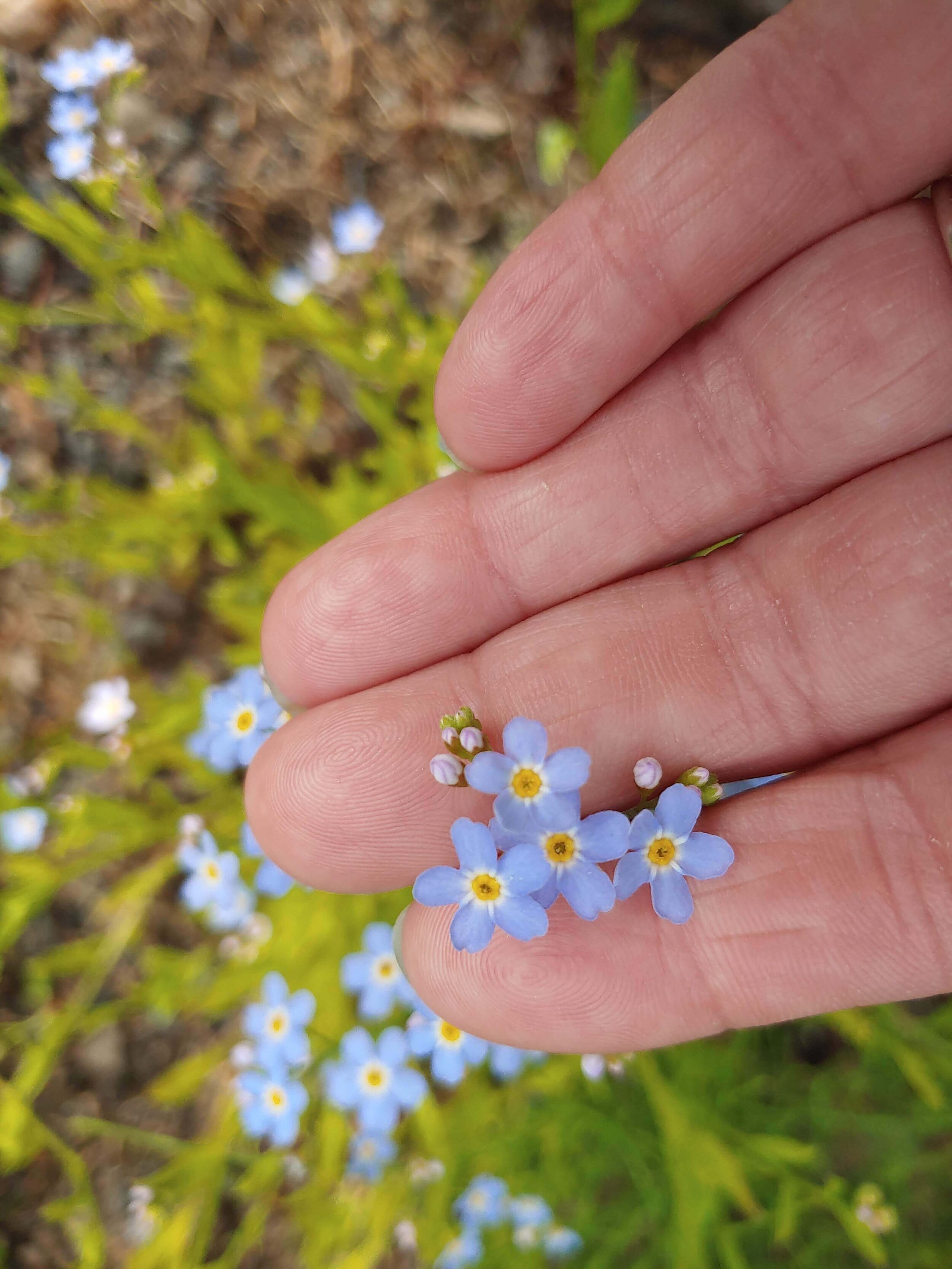

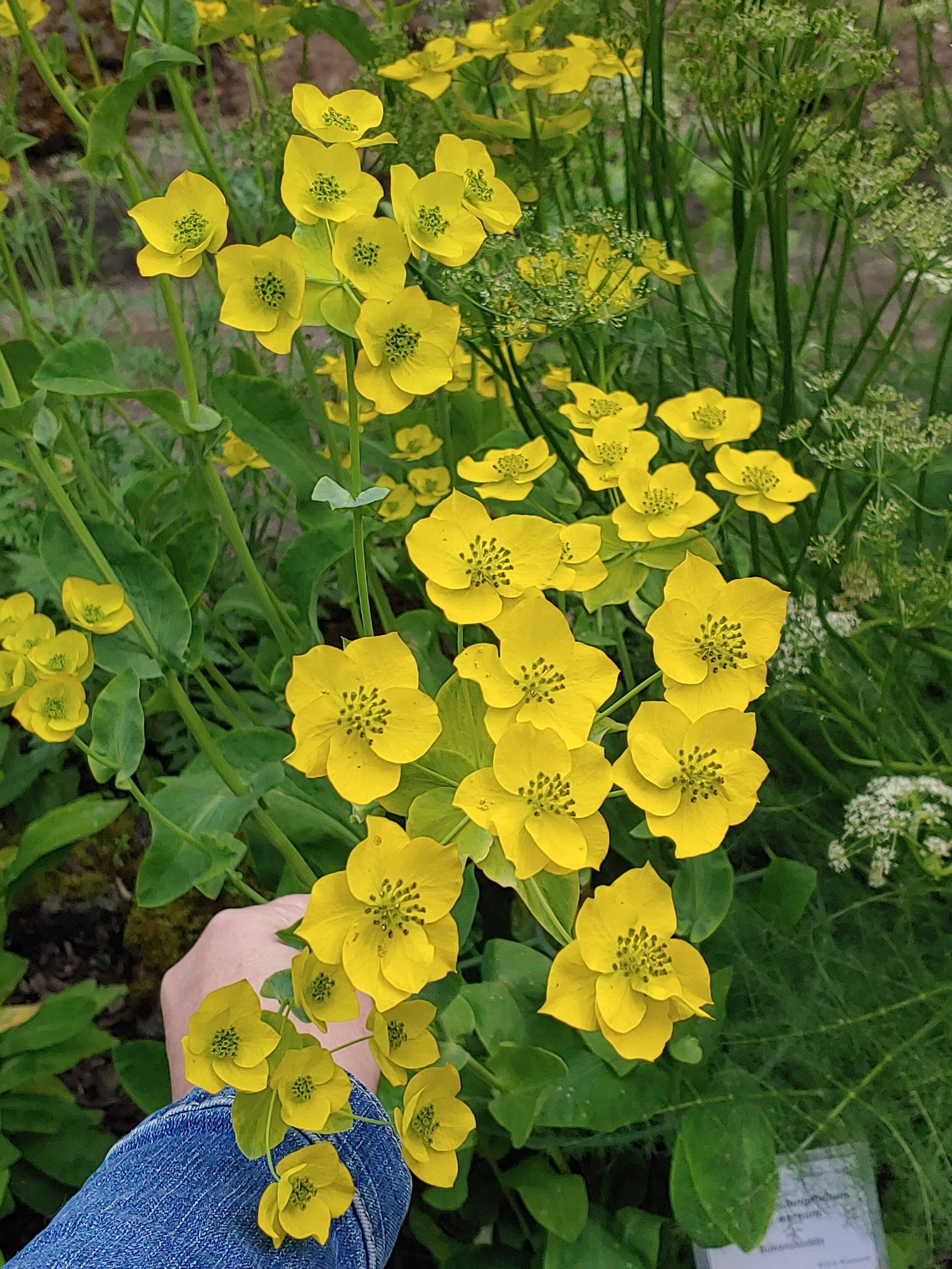



The wild flora was fascinating too. Back in the 1940’s lupines were brought in to increase soil stabilization. They appear to have done their job a little too well and now are taking over some of the native flora. We arrived at the tail end of their bloom. They were all over the roadsides during our travels through the southern part of Iceland.
The northern part of the country had a higher population of wild Angelica and some type of filipendula.
The landscaping around the towns and homes was beautiful but surprising to me. It was an odd juxtaposition of plants. You would have a large planter bowl full of calendula, snapdragons, grasses and then a Dahlia! So lots of cool season plants and a warm season focal!
Also they like to use spirea, alchemilla, and snowberry as foundation shrubs in front of their houses or for hedges in the backyards. Can you imagine a hedge of spirea in July? All of these were blooming in late July.
Lilac was very common too (and it was in bloom). Think of it this way- what if someone swapped out all our crepe myrtles for lilacs? Their lilacs weren’t bushes— they were trees! (This would be an improvement in my opinion)
Iceland is a fascinating country. I feel like we took a geological tour for our vacation. I’ve included a gallery of some other things we saw below in case you missed when I posted them in my Instagram stories.



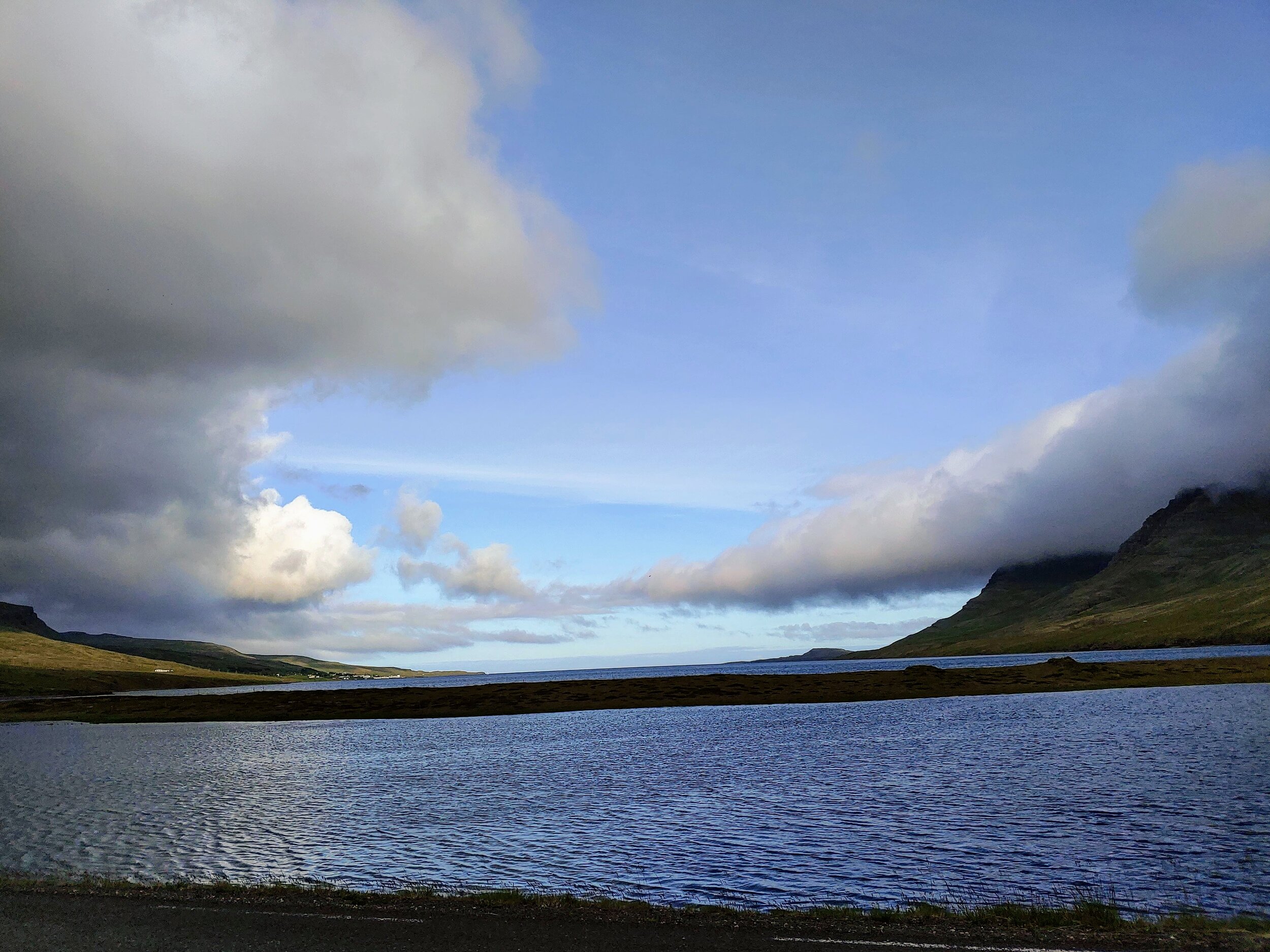





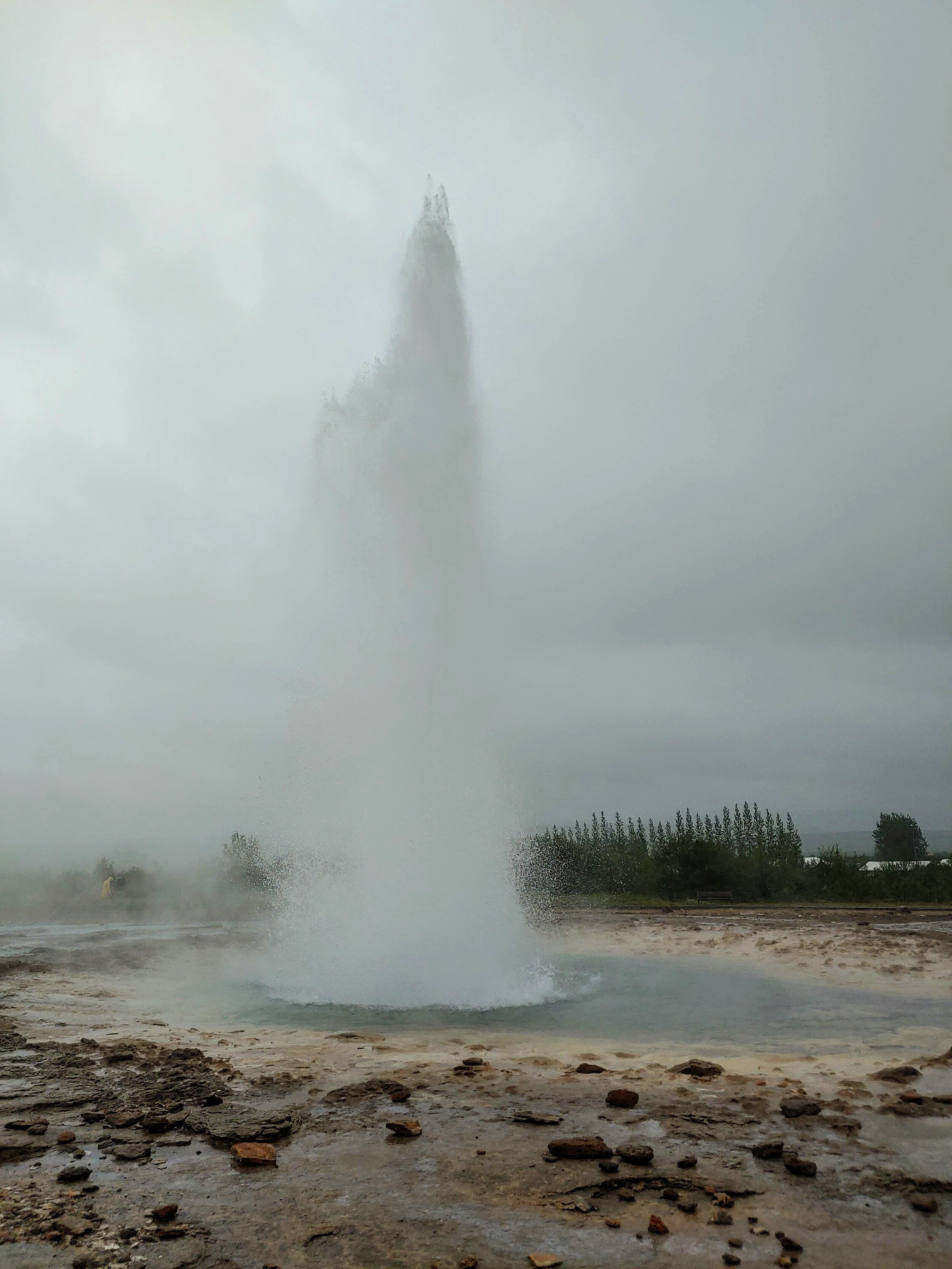

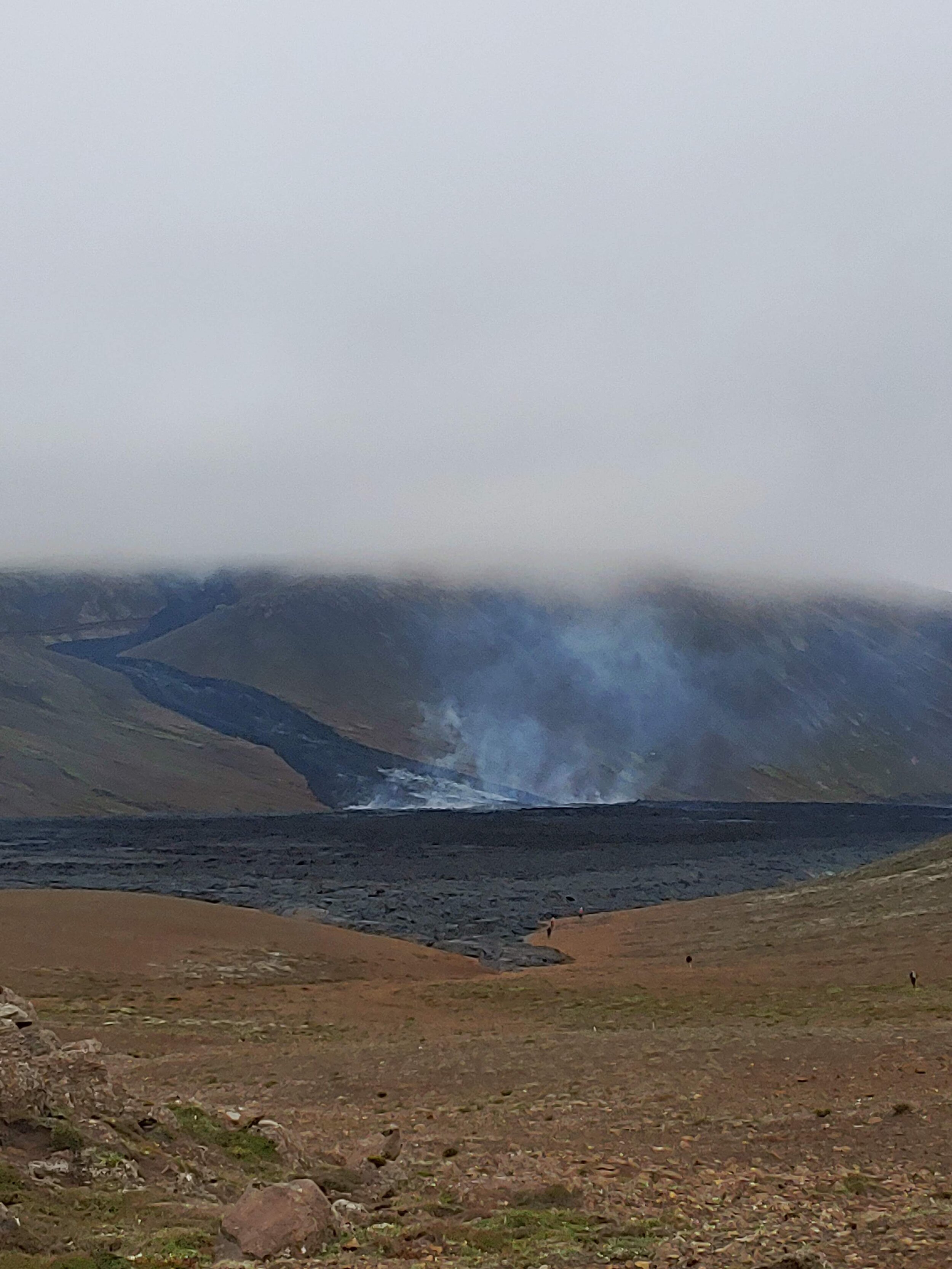
Tips for a great Summer Cut Flower Garden
It’s time to get planting! Here are my top tips to have a great cut flower garden this summer:
Pinch your plants. Most summer cut flower annuals need to be pinched. Pinching means you cut the plant back when it’s between 12-18”. Cut back to 3-4 leaf pairs- cut right above a leaf pair. Some plants that benefit from pinching are: Cosmos, Zinnias, Dahlias, Celosia (not the brain types), ageratum, Gomphrena and Eucalyptus. Pinching causes the plant to branch giving you more stems to cut and a bushier appearance to the plant.
Space Correctly. 9” is a good spacing for most cut flower plants. This allows the plants room to grow but also forces them to grow more upright so they produce nice long stems. You can go a little closer on some things but you have to watch more closely for disease issues b/c they can spread rapidly with closer plants. Also grouping your plants to the same variety in a cut flower garden aids their growth habits. Remember cut flower gardens are for producing stems and not necessarily for aesthetic plant placement.
Support your plants. Flower farmers often use a product called Tenax Hortonova netting. This is a horizontal support netting that comes in various widths. You can buy it online from most plant/greenhouse supply places. Use rebar stakes - these work better than wood if you have heavy clay soil. They also last longer than one season. Install your support netting while the plants are small- much easier than waiting until they are sprawling all over the bed.
Water, water, water! Make sure you are giving your plants adequate water. In order to produce abundant blooms, plants need water! Good drainage is also key. Most cut flowers don’t like to have their roots sitting in mucky wet soil. A small garden style irrigation kit is a life saver in the summer time. The time it will save you is worth the money. Not to mention the peace of mind while you are on vacation.
Feed your plants. Most soils in our Upstate area have decent nutrition but plants can use it up. So once a month, top up the nutrition in your beds with a liquid fertilizer. I recommend the Neptune’s Harvest brand. Fertilizers that work for growing tomatoes work well for flowers too! Cosmos are the exception though— if you give them fertilizer, they will make lush green plants with no blooms. Cosmos actually prefer poor soil.
Limit your use of pesticides. Most summer cut flowers don’t attract major pests. And if they do, the pest usually has a life cycle and is gone within a few weeks. I recommend adopting a wait and see approach. This means not reacting immediately when you see a pest. Do this instead: Research- find out what the pest is, make sure you can identify it correctly. Read about it and learn what it’s predator’s are, learn how to attract them. Water sources in your garden are one of the best ways to attract predators. They attracts birds and they are some of the most useful predators. Remember if you want a garden without harmful pesticides that you means are looking to strike a balance. You have to accept some bad bugs b/c without them the good bugs have nothing to eat and therefore won’t come to your garden. A few nibbles on your petals are a small price to pay for a chemical free garden.
So there you have it— some great tips for a successful cut flower garden! I look forward to seeing your flower photos this summer!
What to Plant and When
It’s definitely time to plan what you are going to grow for the summer garden. I picked my top 5 favorites in each category: flowers, vegetables and herbs.
Flowers:
I like easy flowers that produce loads of blooms! These types are called cut and come again in the farming biz. This means that when you cut the flower, it will produce another and so on and so on. You can plant multiple successions of these crops if you like. Flower farmers do this because we like to change up the colors. Also it protects us against disease- we know we have another crop waiting if one goes down. Lastly, production farming asks a lot of plant so we cut off of them for 4 weeks or so and then start cutting from the next one so we don’t tax the plants. However, the home gardener may be just fine with one crop all summer and fall. Or you may decide you want pastels in early summer but bright rich orange and pinks in the fall. So without further adieu:
1. Zinnias- These are the staple of most cut flower gardens but especially here in the South. Zinnias love our hot weather and take it like a champ! I particularly like the Oklahoma varieties. They are smaller in size but have the best colors in my opinion. However, if big blooms spark your interest, then try the Benary series. Benary zinnias may cost a bit more but they are bred to be more disease resistant.
- Planting/Growing: Direct seed once the soil has warmed (late April here in the Upstate). Space 9-12” apart. If you live in a windy area, stake or net your plants once they get 12-18” tall. Cut the blooms when the stem is strong and stiff — when the flower doesn’t wobble at the end of the stem when you shake it. Cut long stems, especially at first (around the length of your arm). This seems like you are taking off half the plant at first but a really deep cut will cause the plant to branch and also keeps the height manageable. The more your cut zinnias, the more they bloom!
2. Cosmos- I couldn’t imagine a summer without cosmos. They flutter in the breeze like butterflies! They are one of my top 3 favorite summer blooms (right there along with dahlias and celosia). Cosmos come in shades of white, pink, red, orange and yellow. They also come in shorter heights (Sonata series) which are great for the landscape - 2’ high. Also you can get the taller cutting types such as the Double click series or my favorites, the Sensation series — they live up to their name! I’m a classic white cosmos girl- I love Sensation Purity- my fav! The Versailles series is worth it too for some of the darker colors and interesting variegated varieties.
- Planting and Growing- Exactly like Zinnias so see above. Harvesting is different though. You’ll still want to harvest a long stem but for best vase life, harvest when you see the first petal crack from the bud for the single petal types. For the double click series, harvest when they are about 1/3 open. The flowers will continue to open in the vase and get bigger and bigger. Harvesting this way gets the blooms before the bees pollinate them and ensure you get a week worth’s of vase life. If the pollen has begun to get dusty in the center, then the bloom has gone way past it’s optimal point and won’t last more than 2 days in a vase. If you miss harvesting for a few days, then just go through and cut off all the old blooms. Then cut the cracked buds the next day.
3. Dahlias- You knew they had to be on the list right? Dahlias are grown from tubers. You’ll want to plant cut flower varieties if you want to enjoy them in the vase. There are shorter landscape types that you will often see sold in pots at the big box stores. These are pretty but won’t give you long cutting stems.
-Planting and Growing- I plant anytime from our last frost until early June. Plant the tuber a generous inch under the soil if you have heavy clay, deeper if your soil is sandy (up to a few inches). Don’t water until you see the tuber sprouting. Then give it a deep drink once a week, maybe more if weather is dry. Cut the plant back to 3-4 leaf pairs when it is about 18” tall. Once the plant begins to bloom, give it more water but make sure it’s draining— don’t let it sit in wet soggy soil. Harvest blooms when they are 1/3-1/2 open. Place them in a cool dark room for a few hours to hydrate. Dahlias also love flower food in the water if you have it.
4. Sunflowers- These can be cut and come again or single stem. Single stem varieties last longer in the vase but you only get one cut per plant and then it’s done. Look for varieties that are hybrids or say pollenless- these won’t drop yellow pollen all over your table once cut. Don’t worry- they still attract bees even though they say pollenless. Branching sunflowers will give you several blooms at the expense of stem length. Stems are often short. My suggestion is to plant both: branching to give you a show in your garden, single stems for your vase. My favorites are Pro Cut Gold (single) or Pro Cut Plum (single) or Strawberry Blonde (branching). Direct seed once the soil has warmed. Space 12” for branching types and 6” for single stems.
5. Marigolds and Celosia- so I’m cheating and giving you two here. Marigolds are easier to grow but I like celosia more. Marigolds are grown just like celosia and cosmos. Pretty much any variety is good—- just look at the stem length, some are short, some are tall. But marigolds make a great cut flower and have excellent vase life.
Celosia— I once grew 26 varieties in a season so to say I love it is an understatement. However, it can be a bit tricky to get started. First make sure you get a tall cutting variety if you want to use it as a cut flower. What you see in the big box stores are usually short landscape types. I like the flamingo series- it comes in blush and purple. Easy to grow- big lush plants that produce a lot of stems. Also there are different types- plumes, spikes, and combs (the brain ones). So loads to choose from. You can direct seed it (but it needs to be very warm) or start it inside from plug trays or soil blocks. Space it 9-12”, pinch it to cause branching (unless it’s a comb type- don’t pinch those). You harvest it when the stem is fairly stiff and the flower head is a nice usable size. You’ll know if you harvest too early b/c it’ll wilt on you. Harvesting requires a bit of trial and error b/c it’s hard to describe in words the exact stage. But try it a few times and you’ll figure it out.
Vegetables:
First rule of thumb when growing veggies— grow what you like to eat! And maybe try one new thing ;)
My top 5:
1. Tomatoes- I really like cherry tomatoes but large slicers are nice too. But I eat cherry tomatoes like candy during the summer. Sungold and Supersweet 100 are my favs- they produce heavily all summer long. They also start easy from seed or you can usually find plants of them. They are common varieties that are dependable! For large slicers, I like Cherokee Purple, Striped German, and Brandywine. Tomatoes and dahlias actually have a lot of similarities in their growth habits- both need staking, they are voracious feeders once in fruit or flower. They also like a good bit of water and good drainage. You can sow tomato seeds now or get plants in a few weeks. Plant mid- April in the Upstate of South Carolina area.
2. Peppers- I like growing my own peppers- always feels like a money saver to me. Beautiful sweet peppers can be so expensive in the store. I’m afraid I’m not that much help when it comes to hot peppers b/c I’ve never grown anything hotter than a jalapeño. But I love sweet peppers- California Wonder, Marconi, Golden Cal, and many others are great varieties. The purple Islander pepper is a good heavy producer. You can try from seed but they do take around 8-10 weeks before they are ready for transplant. I usually just buy plants b/c I seem to always miss the seeding date. Plant out after last frost. Stake when you plant them b/c they can fall over easily. Also something I notice every year- Peppers pause when it gets hot. If you plant early enough, you’ll get a nice flush and then not much of anything until fall. When it gets really hot mid summer, it’s hard for the plants to give continued growth so they slow down and this means less flower production so less fruit. But keep them watered and they’ll give you a nice flush in fall.
3. Cukes/Squash/Zucchini- I’m lumping all these together b/c they are the same plant family and have similar growth habits. You can direct seed or start transplants- either works. Squash and zucchini are ground dwellers while cukes love a trellis (there are a few zucchini types that will grow vertically so check your variety). Planting a few successions of these is good in our area b/c they are susceptible to squash vine borers. The SBV is an awful pest that bores into the stem and then chews it up on the inside and pushes out a sawdust looking matter and slowly kills off your plant. I like to plant these as early as I can (right after last frost) so that they get well established before the SBV comes around. Also rotate where you plant these in your garden if you get SVB b/c the borers overwinter in the soil. Good varieties- Cukes— Suyo Long (spiny but sweet), Squash: Yellow crookneck, Zuch: Fordhook or Green Bush.
4. Okra- You either love it or hate it. In my household, we are huge fried okra fans. So I always grow a nice crop of okra. Direct seeded or transplants- either works. Space at least 9-12” apart— they get big. I really like the purple okra- tall strong plants and really pretty. It turns green when cooked but I love the purple color. Variety: Burgundy
5. Beans- Fresh green beans take me back to my childhood. Hours spent picking in my grandparents garden before we were allowed to swim. I grow bush and pole types. Bush beans are grown close together 6-12” apart and will flush a big harvest and occasionally a second one. I usually rip mine out after 3-4 weeks of harvesting and plant something else. By that point the pole beans are ready (they take longer). I like rattlesnake for pole beans, bush: dragon tongue, contender, roma. Direct seed beans- no need to start ahead of time, too easy to just direct seed.
**Special mention of Sweet Corn:
I’m not including this in my top 5 b/c it does take a bit of room to grow. But I love some good sweet corn. The important thing to know is that corn is wind pollinated. This means you need to grow it in blocks of at least 4 rows wide and not one long row. You can do a 4x8’ section and still get a good crop. I like Silver Queen the best. It’s what my grandfather grew and you just can’t replace it- it’s the best!
Herbs:
You can’t have a veggie garden without a few herbs. You have to be cruel to be kind to herbs. The rougher you treat them, the more they thrive. I like basil, rosemary, oregano and thyme the best. Sometimes I’ll grow a cool season crop of cilantro and parsley but they don’t like our hot summers. The other 4 are champs in hot weather and all but basil are perennial here in zone 7b. Good drainage, average soil and just ignore them a bit and they will thrive.
Few resources for seeds:
Baker Creek Heirloom Seeds: www.rareseeds.com
Johnny’s Seeds- www.johnnyseeds.com
Renee’s Garden- www.reneeesgarden.com
Botanical Interests- www.botanicalinterests.com
We will also have most of this stuff in our online plant sale beginning Friday, March 19, 2021.
**Quick note- Due to the huge surge of new gardeners during the Covid-19 pandemic, order times are much longer at most seed shops.
Tags: vegetables, flowers, herbs
0 Likes Share
Comments (0)
Oldest First Oldest First Newest First Most Liked Least Liked
Preview POST COMMENT…

















